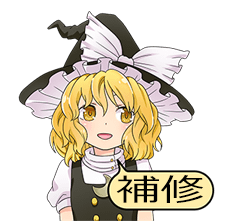Surgery ErisEn
From Discordia
Preparation for surgery
- Put on your surgical mask and latex gloves.
- Put your patient in the body scanner (click+drag them) to see what's wrong.
- Undress your patient and put him on an operating table.
- Wrench an anesthesia canister to the IV/Tank roller.
- Cover the patient with the anesthesia mask (Click+Drag from tank to patient)
- Make sure you're on HELP intent.
- Begin operation.
Note: Using the patient console screen will identify if the patient is stable or not.
| Internal Organ | Internal Bleeding (Head/Chest) | Internal Bleeding (Limbs) |
|---|---|---|
Scan your patient.
(skip above if using laser scalpel)
To close incision
|
Scan your patient.
(skip above if using laser scalpel)
To close incision
|
Scan your patient
(skip above if using laser scalpel)
To close incision
|
| Bone Repair/Mending | Foreign Object Removal | Organ Transplant/Removal |
|---|---|---|
Scan your patient.
(skip above if using laser scalpel)
To close incision
|
Scan your patient.
(skip above if using laser scalpel)
To close incision
|
Scan your patient
(skip above if using laser scalpel)
To close incision
|
Face recovery
- Prepare for operation.
- Aim at the patient's mouth.
- Use scalpel to make an incision.
- Use hemostat to repair vocal cords.
- Use retractor to repair skin.
- Use cautery to close the incision. Done.
Amputation
- Use HELP intent.
- Prepare for operation.
- Aim for the harmed limb.
- Use circular saw to amputate.
- Done. Use Advanced Trauma Kit on the body part leading to the limb to stop bleeding, if you care.
Implantation of organ modules
- Prepare for operation.
- Aim at target cavity.
- Use scalpel to make an incision.
- Use hemostat to stop bleeding. Caution: you do not need this step if you are operating on the head.
- Use retractor to keep the incision open.
- (Torso/head) Use circular saw to open the cavity.
- (Torso/head) Use retractor to keep it open.
- Use surgical drill to prepare the cavity for implantation.
- Carefully put an implant in the cavity.
- Use cautery to connect organ module to the cavity's muscles.
- (Torso/head) Using retractor, close the cavity.
- (Torso/head) Use bonesetter to repair the cavity.
- Use cautery to close the incision. Done.
Internal organs removal and transplantation
- Prepare for operation.
- Head contains brain, eyes, and nervous system.
- Torso contains heart, lungs, and liver.
- Groin contains kidneys and appendix.
- Aim for chosen area.
- Use scalpel to make an incision.
- Use hemostat to stop bleeding.
- Use retractor to keep the incision open
- (Torso/head) Use circular saw to open the cavity.
- (Torso/head) Use retractor to keep it open.
- Use scalpel to separate the organ.
- Use hemostat to remove it. Caution: if you want to use this organ for transplantation, place in fridge. For cyborgization, place brain in an MMI.
- (COMPLETING ORGAN REMOVAL OPERATION)(Torso/head) Use retractor to close the cavity.
- Use bonesetter to fix the cavity.
- Use cautery to close the incision. Done.
- (THE BEGINNING OF THE TRANSPLANTATION) Complete first three (five for torso/head) steps.
- Place the organ into the cavity.
- Use hemostat to connect organ.
- (Torso/head) Use retractor to close the cavity.
- (Torso/head) Use bonesetter to repair the cavity.
- Use Advanced Trauma Kit/nanopaste if necessary.
- Use cautery to close the incision. Done.
RIG removal from a corpse
- Put the body on the operating table.
- Aim at the torso.
- Use welding tool or circular saw to open the RIG.
- Remove RIG's control module from the back.
Autopsy
- Use scalpel on all areas you want to scan.
- Use autopsy scanner on all areas you want to scan.
- Print report by clicking on autopsy scanner.
